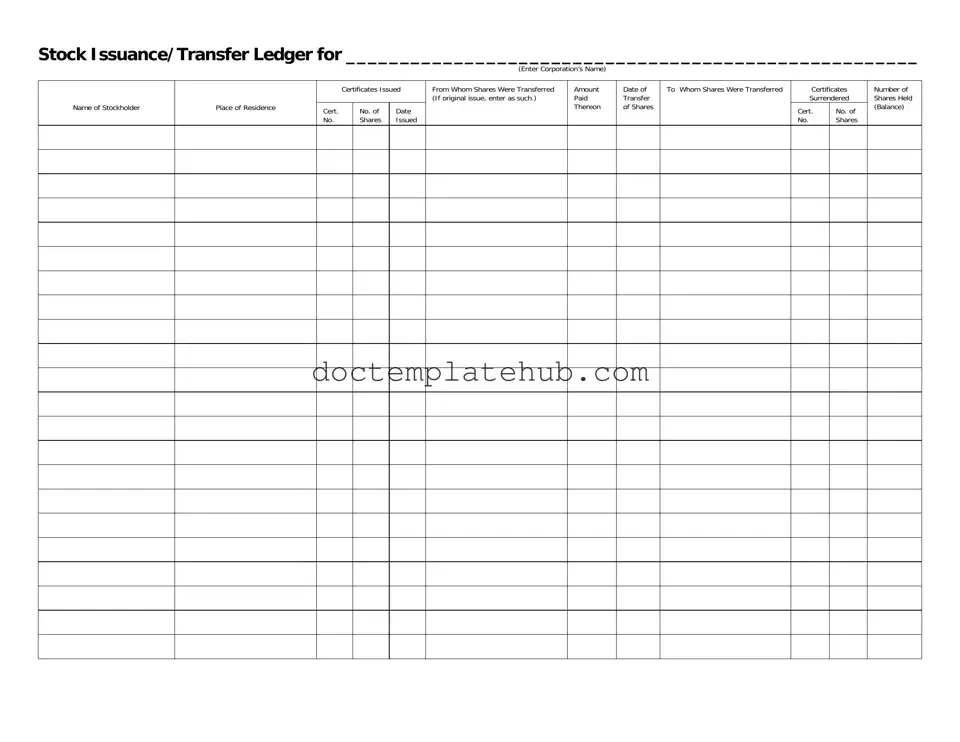What is a Stock Transfer Ledger form?
The Stock Transfer Ledger form is a document used to record the issuance and transfer of shares within a corporation. It captures important details such as the names of stockholders, the number of shares issued, and the dates of transactions. This form helps maintain an accurate record of ownership and facilitates the tracking of stock transfers over time.
What information is required to complete the form?
To complete the Stock Transfer Ledger form, you will need to provide the corporation's name, the name and place of residence of the stockholder, the certificate numbers of shares issued, the date shares were issued, the amount paid for the shares, and details regarding the transfer of shares, including the recipient's name and the date of transfer. Additionally, it is important to note the certificates surrendered and the balance of shares held by each stockholder.
Why is it important to keep a Stock Transfer Ledger?
Maintaining a Stock Transfer Ledger is crucial for several reasons. It provides a clear record of ownership, which is essential for legal and financial purposes. This ledger can help resolve disputes regarding share ownership and ensures compliance with corporate regulations. Furthermore, it aids in tracking the history of stock transactions, which can be valuable for both the corporation and its shareholders.
Who is responsible for maintaining the Stock Transfer Ledger?
The responsibility for maintaining the Stock Transfer Ledger typically falls to the corporation's secretary or an appointed officer. This individual ensures that all entries are accurate and up-to-date, reflecting any changes in ownership or share issuance. Proper maintenance of the ledger is a key part of corporate governance.
How often should the Stock Transfer Ledger be updated?
The Stock Transfer Ledger should be updated promptly after any issuance or transfer of shares occurs. This practice ensures that the records reflect the most current ownership information. Regular updates help prevent discrepancies and maintain the integrity of the corporation's records.
What happens if there is an error in the Stock Transfer Ledger?
If an error is discovered in the Stock Transfer Ledger, it is important to correct it as soon as possible. The correction should be documented clearly, indicating the nature of the error and the date of the correction. Keeping a record of amendments helps maintain transparency and can protect the corporation from potential disputes.
Can the Stock Transfer Ledger be used for electronic records?
Yes, the Stock Transfer Ledger can be maintained electronically, provided that the electronic format complies with applicable laws and regulations. Electronic records must be secure, easily accessible, and capable of being backed up to prevent data loss. Many corporations are transitioning to digital systems for efficiency and ease of access.
What should be done with the Stock Transfer Ledger when a corporation is dissolved?
Upon the dissolution of a corporation, the Stock Transfer Ledger should be preserved as part of the corporate records. This document may be necessary for future reference, especially if any disputes regarding ownership arise after the dissolution. It is advisable to follow state laws regarding the retention of corporate records during and after dissolution.
